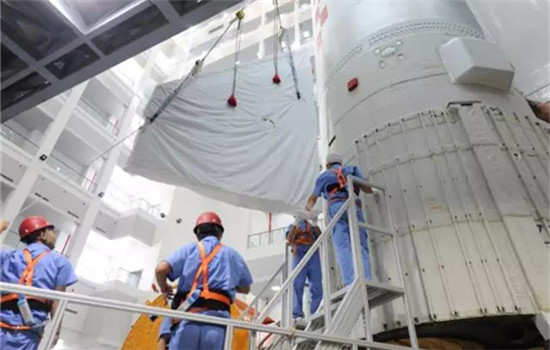
China's newly-developed heavy-lift carrier rocket Long March 5 is in transit at the Wenchang Space Launch Center in South China's Hainan Province, Oct 28, 2016.(Photo/Xinhua)
It took great difficulties and high risks to bring this bulky model into reality. The feasibility study took about 20 years and the research and development (R&D) took another 10 years, so it reached the space later than its "successor" Long March 6 and Long March 7 though its research was initiated earlier than them.
But it was a time-worthy effort. As many as 247 new key technologies with independent intellectual property rights were applied to it.
Its design is also more complicated than other Long March rockets. The components used for this model reached more than 100,000 while the previous models required tens of thousands of components at most. The designing task is 2.5 times more than the previous work. More than 7000 tests were made in over 1000 ground experiments during its R&D, which also dwarfed the previous attempts, according to Li Dong, chief designer of Long March-5.

With the heavy-lift carrier rocket, China can build a permanent manned space station and explore the moon and Mars.


















































